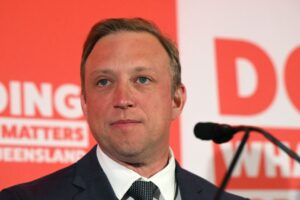
Australia’s Medical Research Future Fund is currently holding billions of dollars intended for health innovations, raising concerns among researchers and medical associations. According to a report from the Parliamentary Budget Office, commissioned by independent MP Monique Ryan, the government could significantly increase annual funding to researchers without diminishing the fund’s overall strength.
The Medical Research Future Fund, established by the former Coalition government, has a base amount of $24.5 billion. Initial plans aimed for the fund to disburse approximately $1 billion annually when it matured. However, the latest government budget outlines a commitment to maintaining annual disbursements at only $650 million, amounting to $6.5 billion over the next decade. This approach would allow the fund to grow to $35.4 billion by the end of that period, but the potential exists to raise disbursements to $1.4 billion annually without diminishing the fund.
The report indicates that even at an increased disbursement of $1 billion each year, the fund would still reach $30 billion in ten years. If the annual disbursement were raised to $750 million, the fund could grow to $33.9 billion. Ryan commented that the figures demonstrate the possibility for the government to allocate more funding to researchers, whose innovations include breakthrough treatments like cochlear implants and HPV vaccines.
As the cuts to scientific and medical organisations under the Trump administration disrupt funding globally, Australian medical associations are urging the federal government to utilize these resources more effectively. Researchers have had to suspend critical projects due to reduced funding from the National Institutes of Health, which is the largest public funder of biomedical research globally.
Ryan expressed her views, stating, “We could more than double the amount spent from the MRFF every year, while keeping more money in the fund than it was intended to hold. It’s a win-win for Australians concerned about our healthcare system, for medical researchers, and for our economy.” She emphasized that many high-quality research proposals have missed out on funding in recent years, and increased investment would enhance health outcomes for all Australians.
Leading figures in the medical research community echo her sentiments. Professor Brendan Crabb, director of the Burnet Institute, described the situation as dire, likening the funding cuts to “having a bomb thrown into the middle of science.” He highlighted that the funds already exist within the MRFF and urged for them to be disbursed as initially planned.
Similarly, Professor Chennupati Jagadish, president of the Australian Academy of Science, called for the removal of the “arbitrary funding cap” to enable the fund to deliver on its intended purpose. “While the fund continues to grow in value, there is no reason to cap disbursements and, in so doing, to cap cures,” he stated.
Dr. Saraid Billiards, chief executive of the Association of Australian Medical Research Institutes, noted that funding is crucial for breakthroughs in various medical fields. “Spending this available money would help stabilize our research institutes, and at the same time enable the government to realize the ambitions of its Health and Medical Research Strategy,” she said.
The call for increased funding is supported by Liz de Somer, chief executive of Medicines Australia, who emphasized that enhancing investment would improve health results, boost economic productivity, and create a more sustainable health system.
In response to these concerns, a spokesperson for the Health Department indicated that the government is in the process of finalizing a 10-year national strategy for health and medical research. “A key area of focus is to ensure that funding for health and medical research is sufficient and strategically coordinated across government, industry, not-for-profit, and philanthropic sectors,” they noted. Public consultation on the draft strategy is currently underway, with the final strategy expected to be delivered by the end of the year.
The government’s current commitment of $6.5 billion over the next decade aims to provide predictability and a stable investment level, in addition to the $1 billion allocated each year through the National Health and Medical Research Council. As discussions continue, the potential for unlocking further funding remains a pressing issue for Australia’s medical research landscape.






